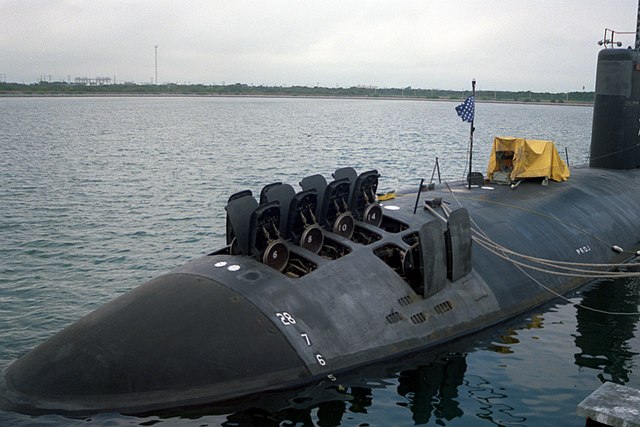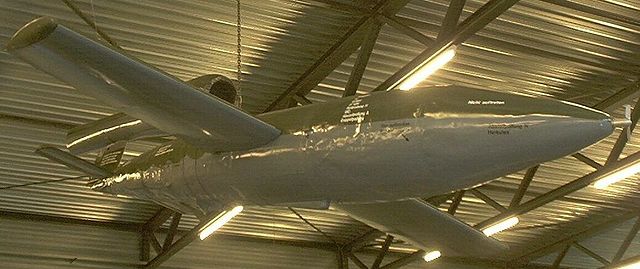Submarine-launched cruise missile
A submarine-launched cruise missile (SLCM) is a cruise missile that is launched from a submarine. Current versions are typically standoff weapons known as land-attack cruise missiles (LACMs), which are used to attack predetermined land targets with conventional or nuclear payloads. Anti-ship cruise missiles (ASCMs) are also used, and some submarine-launched cruise missiles have variants for both functions.
HMS Astute launching a Tomahawk in 2011
The fore section of USS Santa Fe (SSN-763), a Los Angeles-class submarine with the doors of the vertical launching system for Tomahawk missiles in the open position. The method of firing from VLS is in the minority.
A cruise missile is an unmanned self-propelled guided vehicle that sustains flight through aerodynamic lift for most of its flight path and whose primary mission is to place an ordnance or special payload on a target. Cruise missiles are designed to deliver a large warhead over long distances with high precision. Modern cruise missiles are capable of traveling at high subsonic, supersonic, or hypersonic speeds, are self-navigating, and are able to fly on a non-ballistic, extremely low-altitude trajectory.
A BGM-109 Tomahawk flying in November 2002
A Fieseler Fi-103, the German V-1 flying bomb
BrahMos shown at IMDS 2007.
India's Nirbhay missiles mounted on a truck-based launcher






